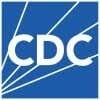Silent Threat: New Study Exposes Alarming Heart Attack Misdiagnosis in Young Women

A significant new study published in the Journal of the American College of Cardiology reveals that over half of all heart attacks experienced by women under the age of 65 are not caused by clogged arteries, which is the most common etiology in men. This disparity often leads to frequent misdiagnoses in women, potentially resulting in inappropriate treatments and further health complications. The research underscores a critical need for greater awareness and different diagnostic approaches for cardiovascular events in younger women.
For the study, researchers meticulously analyzed 15 years of medical data, including records and imaging, from individuals aged 65 and younger who had experienced a myocardial infarction, commonly known as a heart attack. Their findings indicated that more than half of heart attacks in women within this age group were attributed to factors other than atherosclerotic plaque buildup, which typically accounts for 75 percent of heart attacks in men, but only 47 percent in women. Instead, causes such as spontaneous coronary artery dissection (SCAD) and embolisms, where a blood clot blocks a vessel, were more prevalent.
Dr. Hosam Hmoud, a cardiologist at Northwell’s Lenox Hill Hospital, and Dr. Yu-Ming Ni, a cardiologist and lipidologist at MemorialCare Heart and Vascular Institute, highlighted the implications of these findings. One major concern is that conditions like SCAD, which is more common in younger, healthy women, are often overlooked or misclassified as standard heart attacks caused by clogged arteries. This misdiagnosis can lead to unnecessary interventions, such as the placement of stents, which carry increased risks of complications and fail to address the actual underlying condition, thereby depriving patients of proper care.
Spontaneous coronary artery dissection (SCAD) is defined by the American Heart Association (AHA) as a heart attack resulting from a sudden tear in the wall of a coronary artery, which is responsible for supplying blood to the heart muscle. Although SCAD accounts for only 1 to 4 percent of acute heart problems annually, it stands out as one of the most common causes of heart attacks in younger women. Scientists are still trying to understand the exact causes of SCAD, but it is frequently observed in postpartum or postmenopausal women who are otherwise healthy. Potential risk factors identified by the AHA include abnormalities in the arteries, genetic predispositions, hormonal fluctuations, inflammatory issues, and significant physical or emotional stress.
While Dr. Ni emphasizes that SCAD and heart attacks in women under 65 are generally uncommon and advises against alarmism, he acknowledges the higher rates of SCAD in women compared to men. The precise reasons why SCAD is more prevalent in women remain unclear, but theories abound. Dr. Hmoud points to hormonal influences affecting the integrity of blood vessel walls as the most widely accepted theory. Women are particularly susceptible to hormonal shifts, especially during the postpartum period, which can weaken vessel walls. Additionally, fibromuscular dysplasia, a vascular disease more common in women, can alter blood vessel tissue composition, making them more vulnerable to tears, a factor that often goes unrecognized, according to Dr. Ni.
The frequent misdiagnosis of heart attacks in women can largely be attributed to the atypical symptoms they present during a cardiac event. Unlike the classic chest discomfort or pain often seen in men, women may experience symptoms such as nausea or indigestion. These atypical presentations can lead to doctors not pursuing cardiac-specific diagnostic tests, such as CT scans or coronary angiography, which are crucial for detecting conditions like SCAD. Furthermore, there is a pervasive lack of awareness that heart disease is the leading cause of death for women in the U.S. Dr. Ni stresses the need for improved awareness, stating, "I don't think that awareness that heart disease impacts women is as prevalent. That's something we have to do better on." Addressing these gaps in understanding and diagnosis is vital for improving women's heart health outcomes.
You may also like...
Masquerades and Meaning: The Disappearing World of African Festivals

African masquerades are fading, once sacred festivals now threatened by modernity, religion, and tourism. Can Africa’s c...
Naming in Africa: The hidden stories behind what we are called

Beneath every African name lies a story of faith, history, and identity. This powerful feature uncovers how names in Afr...
Lionel Messi Unveils Messi Cup to Showcase Tomorrow’s Football Legends

Lionel Messi has announced the Messi Cup, a new international youth soccer tournament set to debut in Miami from Decembe...
Osimhen Fires Hat-Trick as Nigeria Crushes Benin 4–0 in World Cup Qualifier
)
Victor Osimhen's sensational hat-trick propelled Nigeria to a vital 4-0 win over Benin Republic, rejuvenating their 2026...
Russell Grant's Astrological Outlook: Libra's Romantic Forecast

Discover your daily horoscope compiled by astrologer Russell Grant, offering insights into love, career, and well-being ...
UK Imposes Stricter Visa Rules on Botswana Nationals, Sparking Travel Concerns

Botswana nationals will now require an entry visa to visit the United Kingdom starting October 14, following the revocat...
Europe's Digital Gateway Revolution: New System Transforms African Travel to Schengen Zone

Starting October 12, 2025, Europe's new digital Entry/Exit System (EES) is operational across 29 countries, replacing ma...
No WiFi, Big Fines: Regulators Crack Down on Internet Providers

The COMESA Competition Commission is investigating the Wasoko-MaxAB merger for potential anti-competitive behavior. Mean...



